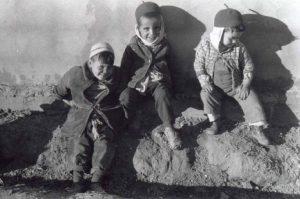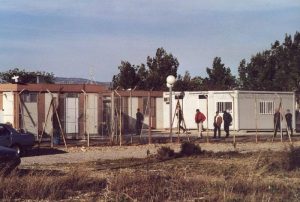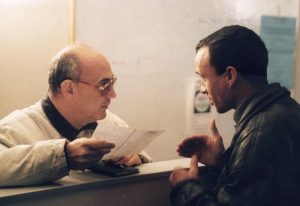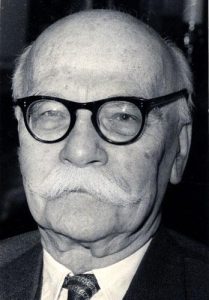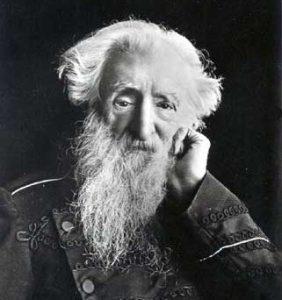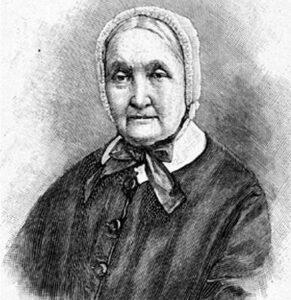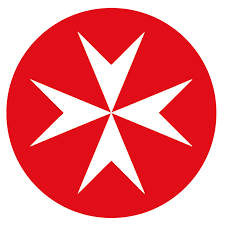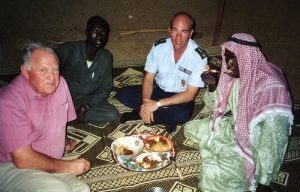The first period of activity was from 1939 – 1945
At the beginning of World War II, Suzanne de Dietrich (1891 – 1981), the General Secretary of the Universal Federation of Christian Students (UFCS) urgently contacted the leaders of the Inter-Movement Committee of Youth (IMCY) to warn them that 200 000 inhabitants of Alsace and Lorraine were going to be moved to the centre and the south of France. The IMCY included the Protestant Scout Movement, the Young Men’s Christian Association, the Young Women’s Christian Association and the French Federation of Christian Student Associations.
In October 1939, the leaders of the CIMY created the Cimade: teams of social workers were formed to welcome the refugees; although the inspiration for such action was due to Protestant values, they also brought real practical help. Violette Mouchon (of the Protestant Scouts) was the President and Madeleine Barot (of the French Federation of the Associations of Christian Students) was the General Secretary. They soon started work helping all those who had fled to the unoccupied zone of France, only to be placed by the Vichy regime in internment camps: they had fled from Nazi Germany or the occupied zone or Franco’s Spain. The Cimade were especially active in the Gurs and Argilès camps.
After the Veld’Hiv police raid in 1942, which was followed by a continuous deportation of French Jewish families to Drancy and Auschwitz and also the invasion of the Free Zone, the Cimade teams of helpers changed their tactics: before, they had sought to help refugees, now they undertook acts of resistance. They organized many escape groups to help those who were hunted by the Nazis or threatened with death to get to Switzerland – (they used camouflage, made false identity papers and provided guides on the perilous journey through France). Madeleine Barot turned for help to the Red Cross, the Ecumenical Movement (which was then in its early days) and the Quakers, amongst others. She contacted the ‘Bank of Flowers’ (Le Coteau Fleuri a holiday centre in Chambon-sur-Lignon) and the pastors André Trocmé and Edouard Theis as well as several other children’s homes in Marseilles, Toulouse ,Nice, Tarascon etc.
With the end of the war there were still whole populations far from home and the Cimade continued to welcome displaced people and to train other helpers. This was carries out in close co-operation with the leaders of the Ecumenical Church Council. They sent teams of helpers to ruined German cities to try and bring about a movement of reconciliation with former enemies. This led them to collaborate closer with other churches and they organized many ecumenical training sessions.
Decolonisation (1945 – 1966)
At the end of the war, many countries were inspired by decolonization movements which gained more and more popular support and led ultimately to national independence in the 1960’s. The Cimade began to work almost exclusively with the Third World. They set up a team of helpers in Dakar and also helped war victims in Algeria, with teams working in regroupment centres where thousands of inhabitants who had been forced to leave their villages could find shelter. When Algeria became independent a NGO took over from the Cimade.
Helping refugees (1965 – 1990)
After the war, France was able to develop her industry and economic growth on a massive scale thanks to financial help from the Marshall plan and a policy of reconstruction throughout the country. More jobs became available and little by little industries had to turn to foreign workers in order to carry out the necessary tasks. On the whole, they were not well provided for on their arrival in France and they were separated from their families except in a few cases. Slums developed in the suburbs of many big industrial centres. To cope with this situation, the Cimade had to reorganize its activities. From now on, it was called the Cimade, an ecumenical organization of mutual support. It was active in the following areas:
-It helped migrant workers who had been exploited by their employers.
-It helped the refugees who during the 1960’s were fleeing from countries overrun by dictators and especially from Latin America.
-It helped Third World development by supporting people in situ who were engaged in the economical progress of their country. Even though the Cimade was a small organization compared to other NGOs, it developed its own strategy of support based on the profound interaction between underdevelopment, migration and political regimes which were so repressive that whole populations sought refuge in other countries.
From 1980 onwards, the Cimade has been active in defense of foreigners’ rights
France implemented a policy of refusing entry to the foreigners who approached her frontiers so it became more and more difficult for them to come in to the country or to stay there. The Cimade reacted by working for the defense of foreigners’ rights. This entailed demanding the respect of national legislation and international conventions, especially in the Centres for Administrative Detention. And for a long time the Cimade was the only association authorized to intervene in defense of people in these centres.
In fact, the Cimade ran its own temporary accommodation centre with a capacity of up to a hundred people and which had already been active for more than sixty years. During this time it had received people from many different countries and backgrounds. At first, there were the refugees with a regular official situation who were waiting for more permanent accommodation and on the other hand, there were French students who needed somewhere to live for part of their studies. At this time, most refugees came from ex-communist states or Latin America where repressive dictators held sway. As these refugees often had a university background, it was thought that they would integrate more easily into French society if they were put into contact with young people undertaking studies at a high level. However, at the end of the XXth century, the refugees no longer had such an exceptional cultural level so there was little interest in putting them together with French students and the policy was stopped. Another reason for this was that now many more refugees than previously were coming to the Centre so there was no more room for French students.
Working in immigration detention centres and offering accommodation to refugees became quite unaffordable for the Cimade’s voluntary contributors so they had to turn for financial help to public organizations. However, independently from these, the Cimade is able, from its own funds, to contribute significantly to the reception, advice and support of foreigners who are often caught up in administrative situations which are quite inextricable.
The Cimade is an organization which is grappling with contemporary social problems
The organization of the Cimade has had to adapt to changing circumstances since it first began. From 1970 onwards, it stopped sending teams of volunteers abroad.
At the end of the XXth century, the Cimade implemented an innovative regional policy. The hub of activity was no longer a team of volunteers but rather the local group and the regional office. Voluntary team members in each region played an essential role in the Cimade’s work and were well represented at the General Assembly of the association. For this reason they contributed significantly to the way in which it was run.
The Cimade’s work in the centres for administrative detention has also changed. These centres are now run differently: they invite various associations to apply for a particular job and then choose the one who is best suited. So now the Cimade is just one amongst others.
The Protestant identity of the Cimade is no longer what it was at the beginning: Article 1 of its statutes in June 2014 no longer refers to the Gospel:
‘The aim of the Cimade is to show solidarity with oppressed or exploited people. It defends the rights and dignity of refugees and migrants whatever their origins, political opinions or convictions.’
However, in the foreword to its statutes, the Cimade states that it is a member of the French Protestant Federation. It is also in contact with French Protestantism and its links with other churches or Christian organizations. So indirectly, it has not moved far away from the Gospel which was originally its model.
La Cimade
61 Rue Clisson,
75013 Paris
Tel: 01 44 18 60 50
Contact: infos@lacimade.org


